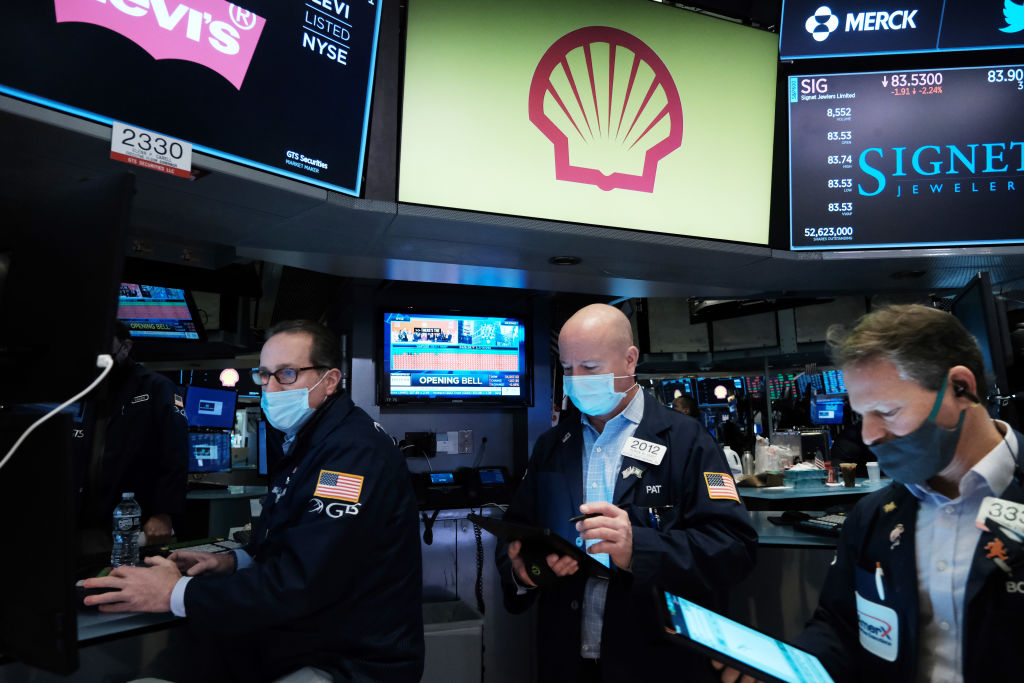Shell: What to expect from the energy giant’s upcoming fourth-quarter results

Shell is set to provide investors with a key update on its massive $7bn share buyback scheme during its fourth-quarter results later this week.
The oil and gas giant has now begun trading with a single line of shares after gaining shareholder approval for the measure last month.
It has also both ditched its long-established Royal Dutch name, rebranding as Shell and shifted its headquarters to London from the Netherlands.
Prior to its departure from the country, Shell was at loggerheads with the Dutch authorities over the 15 per cent dividend withholding tax, and court orders to reduce its carbon emissions by 45 per cent before the end of the decade.
Earlier in January, it released an ambivalent trading report, where it pledged to pursue “at pace” its share buyback, largely funded from the $5.5bn sale of its US shale assets.
However, its update also revealed set backs such as liquefied natural gas (LNG) outages and slower fuel sales due to the economic effect of the Omicron variant this winter, meaning a downturn in performance is likely to be reported in its fourth-quarter figures.
UBS, which has maintained its buy position towards the oil and gas giant, expects the buy-back programme to proceed in a relatively swift fashion.
Lourina Pretorius, product manager, said: “We expect an update from the company on the pace of the buy-back programme in 2022. We forecast $2.5bn in the first quarter, $5bn in second quarter, $3bn in third-quarter, and $2bn in fourth quarter.
Edward Moya, senior analyst at OANDA told City A.M. that Shell’s performance over the past three months has likely been hit by operational issues.
This has offset the potential benefit from rallying Brent Crude oil prices, which have skyrocketed to $91 per barrel, with sustained speculation from analysts that prices could hit $100 this year.
He said: “Despite higher prices, the largest trader of LNG has not had an easy time as they’ve been hampered by key outages in Australia. High margin payments are expected to hurt their gas divisions and oil products trading and optimization results are expected to be significantly lower than last quarter.”
Talking points: How to read beyond the headline figures
Russ Mould, investment director at AJ Bell, argued that the key figure to look out for in the results was the underlying profit on a current cost of supply (CCS) basis.
This refers to the net income of an oil and gas company after adjusting for the increase (or decrease) in actual expenses over the reporting period, and felt this would provide a clear picture of Shell’s performance.
The investment director said: “The current consensus forecast for 2021 as a whole is $21.7bn, against just $4.8bn in 2020. For the fourth quarter alone, that implies adjusted CCS profits of $8.8bn, up from just $393m in the same period in 2020.”
He also recommended investors keep a keen eye on cash flow, which hit $6bn for the third time in five quarters between July and September, and the company’s mix of spending within its capital investment – with Shell seeking to reposition itself for a net zero carbon world.
It is unclear whether Shell will comment on activist pressure, following Wall Street raider Third Point acquiring a $750m stake in the company. The fund management group has since publicly called for Shell’s break-up, with a separation of its fossil fuel and renewable operations.
Susannah Streeter, senior investment and markets analyst at Hargreaves Lansdown suggested that Shell’s likely shareholder announcements combined with the cost of living squeeze amid soaring energy bills could heighten calls for a windfall tax on North Sea oil producers.
Speaking to City A.M. she said: “The energy giants argue that the higher earnings will be ploughed back into investment into greener, cleaner forms of energy. But that argument won’t wash if bumper pay-outs to shareholders also follow. ‘’
The company recently exited the project at the Cambo oil field in the North Sea, with the Shell committing to net zero carbon emissions by 2050, and for oil production to have peaked in 2019.